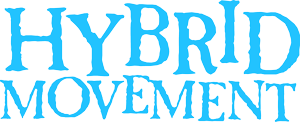Front Squats vs. Back Squats: Which Exercise Is Best For You?

Overview
Before we go into the differences between front squats vs. back squats, let’s define the squat.
The squat is a dynamic resistance training exercise that engages several muscles from the upper and lower body in a harmonious fashion.
Training these muscles by doing squats can help you become more efficient as an athlete and decrease your risk of injury.
In this article, we will discuss the general benefits of squatting, as well as the difference between the back and front squat.
The benefits of squatting
Improves core strength
Improving your core’s strength can help you in the daily movements, such as standing, bending, walking, and turning.
Squatting will also enhance your balance and coordination, as well as relieve painful sensations in your lower back.
In a 2018 study, researchers found that back squats are especially beneficial for back muscles compared to other exercises (e.g., planks).
Reduces the risk of injury
By targeting the muscles of your lower and upper body, squatting helps you execute full-body exercises in the correct form while maintaining balance and spinal alignment.
Additionally, regular practice of squats will strengthen your tendons and ligaments, which reduces the risk of injury.
Burns calories
Compound movements (e.g., squatting) are excellent exercises to shed a few pounds as they recruit a large number of muscles, which eventually leads to more energy expenditure and calories burnt.
According to Harvard Medical School, you can expect to burn up to 223 calories in 30 minutes of strenuous training like squatting.
Promotes muscle hypertrophy of the lower body
The lower body has the largest muscles of the entire musculoskeletal system (e.g., quadriceps), which burn a lot of calories and need intense strength training to grow larger.
Fortunately, squats strengthen these muscles and promote hypertrophy, improving your athleticism and allowing you to perform daily activities with ease.
How to squat
Here’s a simple guideline on how to perform the back and front squat:
Back squat
The back squat adds resistance to the entire body by lifting a barbell on your shoulders. This exercise is the gold standard in the athletic field, as it accelerates the recovery from injuries and boosts fitness abilities.
Here’s how to do it:
- Put a barbell in the squat rack.
- Place your shoulders underneath the barbell and grab it with both hands (your neck should be in front of the barbell).
- Spread your feet slightly wider than shoulder-width apart and step back to clear the rack.
- Descend to a squatting position until your hips are on the same levels as your knees.
- Stay in that position for a while, then lift your body back to the initial position.
Front squat
The front squat focuses more on the quadriceps, as the weight gets placed on the front of your body.
Note that you will probably need a lighter barbell for this exercise.
Here’s how to do it:
- Place the barbell on your shoulders and grab each end with one hand (your neck should be behind the barbell).
- Spread your feet slightly wider than shoulder-width apart.
- Lower your body until your hips are on the same levels as your knees.
- Use your feet to get back to the initial position.
A quick comparison between the back and front squats
The table below will compare both squats, where the green symbol indicates the superiority of one exercise over the other.
Two symbols in the same row indicate a tie.
| Function | Back squat | Front squat |
| Hip extension | ✓ | |
| Jumping power | ✓ | ✓ |
| Overall strength | ✓ | |
| Shoulder health | ✓ | |
| Knee health | ✓ | ✓ |
Takeaway message
Squatting exercises are the best way to improve or restore your athletic abilities in a simple movement that doesn’t require a lot of knowledge about strength training.
